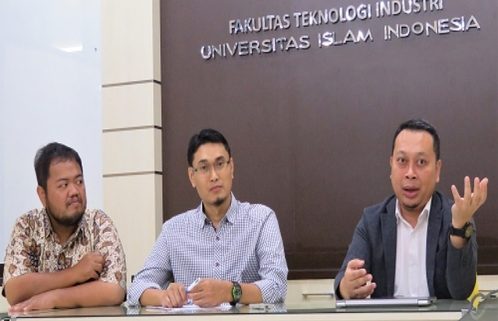FTI UII Develops Fuel Cell Electricity
To create alternative energy sources, the Industrial Technology Faculty (FTI) Universitas Islam Indonesia (UII) Yogyakarta developed a fuel cell power plant called Hydrogen Fuel Cell Electro Project UII.
The development of the fuel cell power plant was the result of collaboration with PT Cascadient Indonesia. The innovation was officially launched on the UII campus in Yogyakarta on Friday (1/18/2019).
Chairman of FTI UII’s Electrical Engineering (TE) study program, Yusuf Aziz Amrulloh, said that the development of the fuel cell power plant is also an alternative power plant by utilizing the potential of new and renewable energy sources. Namely, with hydrogen fuel cell energy.
“With the completion of the construction of the project, it is expected to be a model and education and inspiration to be able to take advantage of the potential of new and renewable energy sources. Especially in fulfilling electricity needs, especially in educational institutions, “Yusuf said on Friday (1/18/2019).
FTI UII Hydrogen Fuel Cell Project Manager Setyawan Wahyu Pratomo explained, the way this hydrogen fuel cell power plant works is by converting hydrogen fuel into 48 VDC electrons or electricity through chemical reactions in the reactor tube. Then the 48 VDC output is converted to 220 VAC electricity through an inventer.
“For the operation of the valve, the hydrogen gas cylinder is opened, then the flow of hydrogen gas flows in the hydrogen fuel cell reactor stacking circuit until finally there is an electrical electron exchange of 48 VDC, from 48 VDC electricity connected to the 220vac inventer so that electricity can be used,” Setyawan said in between the launches.
According to Setyawan in general the hydrogen fuel cell of 48 DVC can be used for the needs of Telecommunications BTS. Whereas in UII with a capacity of 2.5 KW with a hybrid system it is used to meet the electricity needs at FTI. At the same time adding existing power plants, namely PLTS, PLN and generator sets.
“With the electric load in UII 220 VAC, the fuel cell capacities can be inventered from 48 DC to 220 VAC, so that it can become an alternative power plant,” he explained.
Source: SindoNews




